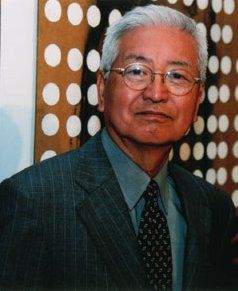« Coffee Break | Main | If You are the One »
December 01, 2009
Silence

Chinmoku
Masahiro Shinoda - 1971
Eureka! Masters of Cinema Region 2 DVD
Even if Masahiro Shinoda had not made his version of Shusuko Endo's novel, I suspect that Martin Scorsese would have still wanted to film Silence. The novel, much more clearly than the film, is about a Portuguese priest who continually compares his own ordeals with that of Jesus during his last days. Even before it became trivialized as a bumper sticker, the question here, as in both the film and novel for The Last Temptation of Christ is, "what would Jesus do?". This is not intended as sarcasm but as the motivating question probably probed by Scorsese himself during his own contemplation of becoming a priest rather than a filmmaker.
Viewed as part of Shinoda's own significant career, Silence might be best understood as being part of his own examination of outsiders who choose exile or death in the name of an ideal. What I found interesting is that even though Endo collaborated on the screenplay with Shinoda, the film does not adhere as an exact filming of the book. Both the book and film are primarily about a priest who travels to Japan during the 17th Century, when Christianity is forbidden in that country, in part to spread the word, and also to find out what has happened to his predecessor who reportedly denounced Christianity. While the opening chapters chapters involving Father Rodrigues voyage from Portugal to Japan, and closing chapters from the diary of a Dutch sailor are easily missed, much of Endo's intended message is lost without Father Rodrigues's inner dialogues. While some of the books elements remain in the book, such as Rodrigues comparing a character to Judas for the monetary reward given to reporting Christians to the government authorities, what really interests Shinoda is the general concept of faith.
Even the the tall, gaunt, David Lampson was probably cast in part because of his resemblance to the traditional image of Jesus, Silence, both the book and film, can be understood as not simply being about Christianity or even endorsing one faith over the other. One of the murkier areas of Japanese history touched on in both the book and film was the problem with different factions, representing both different expressions of Christianity as well as different European countries, in conflict with each other both within and outside of Japan. Not touched on in the film, and only briefly mentioned in the novel, is the role of Buddhism, with its own history of conflicting sects, and persecution of those who did not support the state endorsed temples and priests. What the film also does not explain is why there was an attraction to Christianity primarily by poorest of the Japanese. The film version of Silence only partially conveys some of the more abstract ideas, about the meaning of faith, and how it is expressed.

Masahiro Shinoda
Shinoda is said to have been influenced by Japanese art in his color scheme that is primarily dark brown, black, brown and green. At one point, Father Rodrigues wears a red kimono during the time he is on the run until his capture. I can't explain the meaning, but during Rodrigues's capture, a character in a solid red kimono and mask appears, performing a kind of dance, while Rodrigues is dragged to prison. The other character to appear in red is a prostitute who takes up with Kichijiro, the man who revealed Rodrigues's presence to the authorities in exchange for silver pieces. Refused forgiveness by Rodrigues, Kichijiro requests that the prostitute spit on him in exchange for all of his money, and as a way to expiate his sins. It should be noted that in Japanese folklore, red symbolizes healing and purification.
In a very different way, Silence is as stylized as anything previously done by Shinoda. Instead of the highly theatrical sets of Double Suicide or the use of technique that might draw attention to itself, Shinoda uses the limited color scheme described above, and limited camera movement. At a time when most films were made in some kind of wide screen format, Silence returns to the old "Academy" ration of 1.33:1. I would have to dig out my copy of Sergei Eisenstein's film theory, but one might consider Shinoda's comment in regard to the square screen used in Double Suicide, "The Russian director Sergei Eisenstein said that God meant a square. And I dared to film the existence of God, in a calligraphy represented by that square." Silence is a film and novel exploring the perceived silence of God by one believer. Shinoda is in need of greater critical assessment of his overall career. At this point, most of the English language writing is devoted to individual films. My own understanding of Shinoda is based on only a portion of his total work. Silence might be understood as a Shinoda film as part of the filmmaker's own pursuit in discovering the visual equivalent to philosophical ideas.
Posted by Peter Nellhaus at December 1, 2009 12:42 AM
